How Can We Help?
From an entire interior home renovation, to a new kitchen, we take care of everything. Call us today on 1300 450 320 or leave your details below to book your custom design consultation.
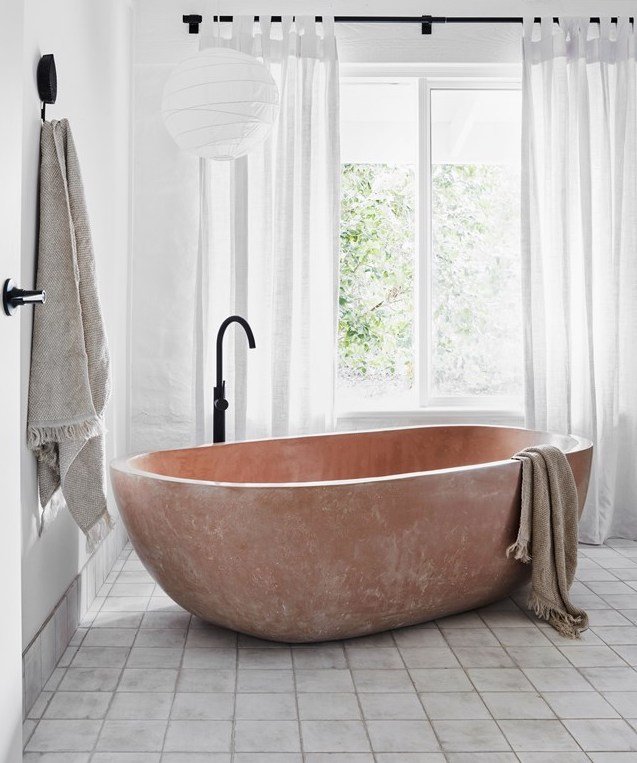
A bath is one of the oldest and surest ways we can indulge in the comfort of our own home. Along with walk-in showers, and spa-like accessories, the bathtub has become a must-have for modern bathroom renovations. It is an important and exciting decision that will significantly shape your bathroom design process.
The modern bathtub is elegant and comfortable whilst compact enough to fit into almost any bathroom space. Bathroom innovations allow seamless joins, built-in shelves, and ergonomic contouring. But with so many options available, it can be hard to know what type of bath to select for your bathroom renovation and which styles are the most suitable and practical.
Inside this month’s B&C Journal, we share our bathtub round-up, including types of bathtubs and materials worth considering for your next bathroom renovation project. Enjoy!
The Team at Balnei & Colina
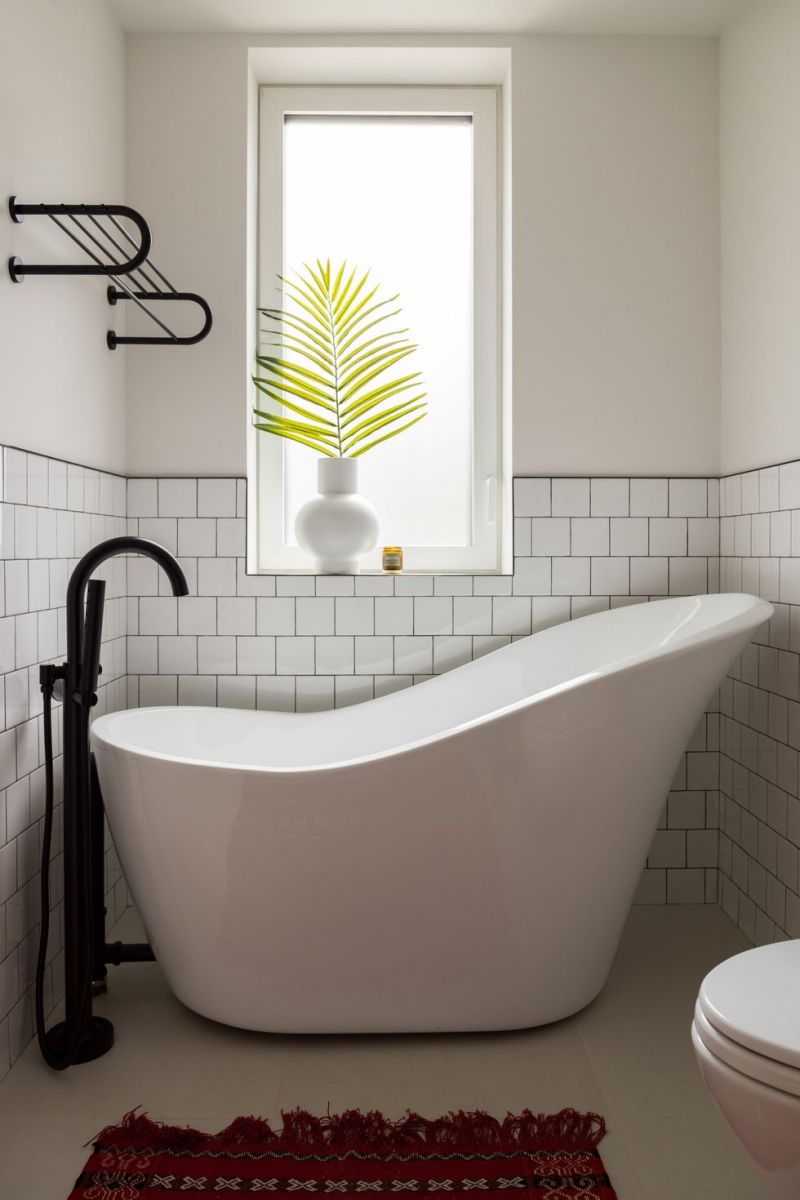
Image via House Beautiful
How much space do you have in your bathroom? The answer to this question will be a deciding factor when choosing your new bathtub. Keep in mind that a freestanding bathtub will need to be setback from your bathroom perimeter and will also need at least 100mm of room around it for cleaning.
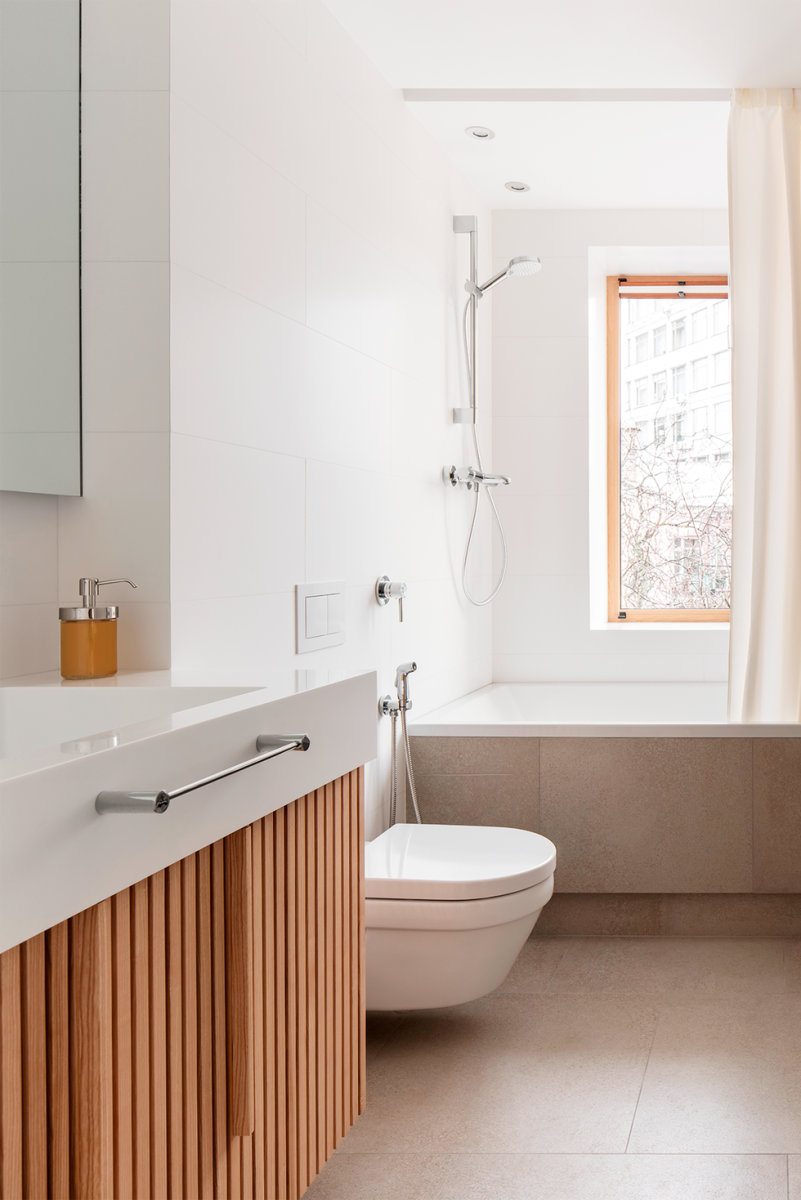
Image via Andriy Bezuglov
How will you use your bathtub? Do you want a purely functional or decorative bathtub or a bit of both? Freestanding bathtubs are lovely for relaxing, while inset (drop-in) bathtubs tend to be more practical, making them an excellent choice for families with young children.
You could even opt for a back-to-wall or D-shaped bathtub that perfectly combines functionality and style.

Balnei & Colina | Penshurst North Bathroom Renovation

Image via Erika Bierman
How will your new bathtub complement your bathroom design? If your bathroom renovation includes curves or sleek lines, echo these features in your choice of bathtub, as well as other bathroom elements like your basin, mirrors, and tapware, to ensure a cohesive look.
For example, a sharp-angled bath is better matched with an angular basin and geometric tapware.

Balnei & Colina | Marrickville North Bathroom Renovation
As the name suggests, drop-in bathtubs include the shell only and are ‘dropped’ into a custom-designed frame that encloses them. The structure the bathtub sits in can be finished to match or contrast with your bathroom cabinets or tiles, making this style of bathtub highly flexible.
The drop-in bathtub adds luxury and spaciousness to your bathroom renovation as it can be built along a wall, in an alcove, or be freestanding. You can also create clever storage solutions around this type of bathtub for items like bathroom toiletries and towels.
Drop-in bathtubs are a common style seen in homes today, and they are great space savers and can offer a 2-in-1 solution if you don’t have room for a separate shower. They’re also great for families with small children, as they often only have one exposed side, meaning you can easily reach (and contain) your little ones.
Allow the Balnei & Colina bathroom renovation Sydney team to take the guesswork out of your bathroom renovation process so you can bring your dream bathroom to life. You can book a quick chat to discuss your project.
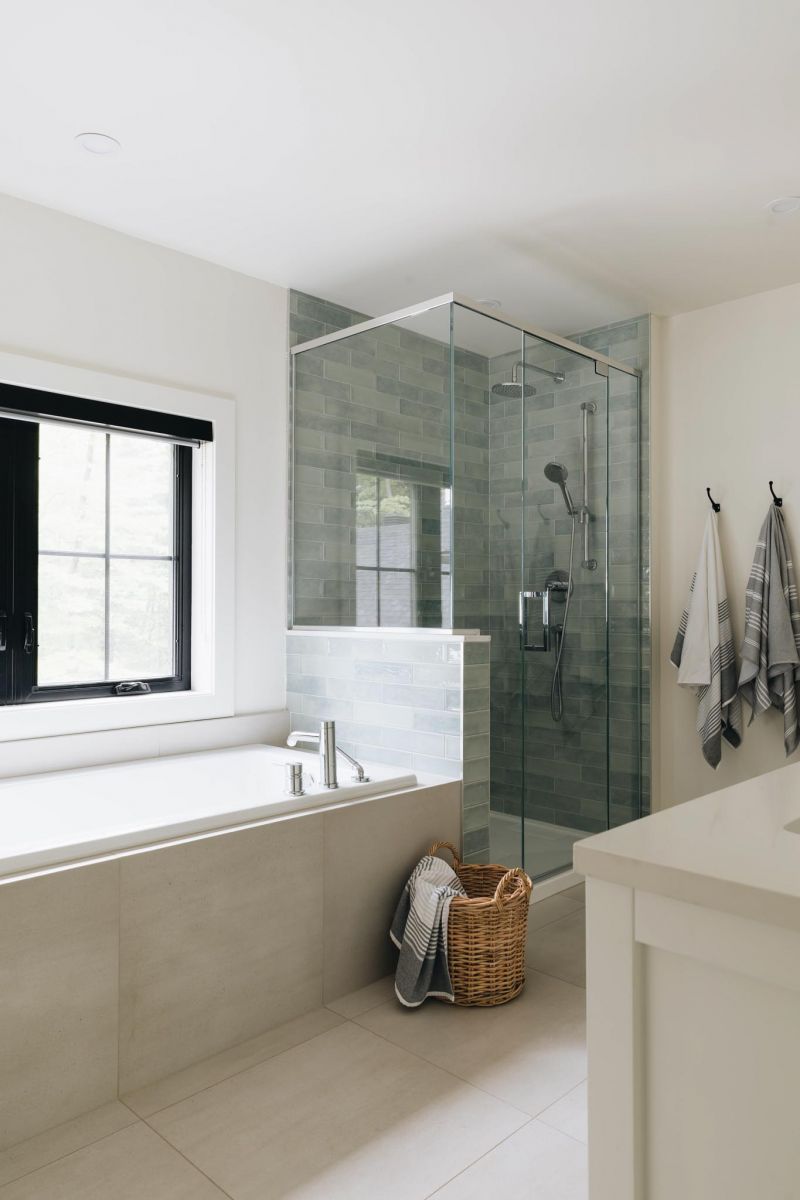
Image via CMPG Design Construction
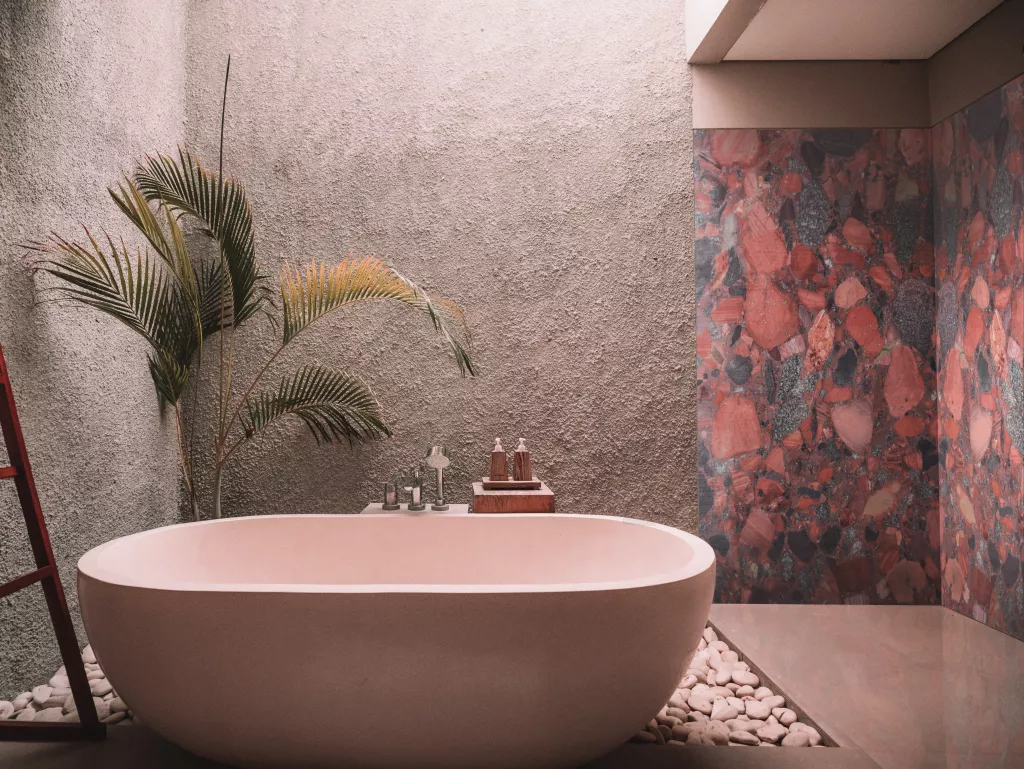
Image via Homes and Gardens
The freestanding bathtub is often the focal point of today’s contemporary bathroom renovations and has become an increasingly popular choice for home renovators.
Freestanding bathtubs come in various styles and materials, making them a flexible design option. Available in a wide range of shapes and sizes, this type of bath is easy to fit within many bathroom design layouts.
Renowned for its elegance and creating the illusion of space (as they show more of your bathroom floor), even a compact bathroom will feel more open with the right freestanding bathtub.
Freestanding bathtubs are usually 50% deeper, too — the height around the sides ranges from 600mm to 1m for a freestanding tub vs. 300mm to 500mm for alcove tubs — meaning they hold more water and provide more interior space. Something the taller members of your household will thank you for!
Considering your personal style and needs, the Balnei & Colina bathroom renovation team can transform your bathroom into your favourite room in the home.

Image via Good Housekeeping

Balnei & Colina | Gladesville Bathroom Renovation

Image via Architectural Digest
The soaking bathtub is a traditional Japanese-style tub we’re seeing more and more of — especially as the popularity of Japandi design (a fusion of Scandinavian and Japanese design elements) continues into 2023.
The footprint of this Japanese-style bath is relatively small, but it makes up for this in depth. These bathtubs are designed for a long, relaxing soak — completely submerging the bather.
Commonly made out of acrylic, enamelled cast iron, or wood, the average depth of a soaking tub is around 610mm. However, larger spa-like sizes are also available. These bathtubs can be designed with the occupant laying down or seated, so water covers the body while the user can sit comfortably on a seat carved into the bathtub itself.
To learn more about Japandi design, read our blog: 6 Inspirational Bathroom Trends for 2023.
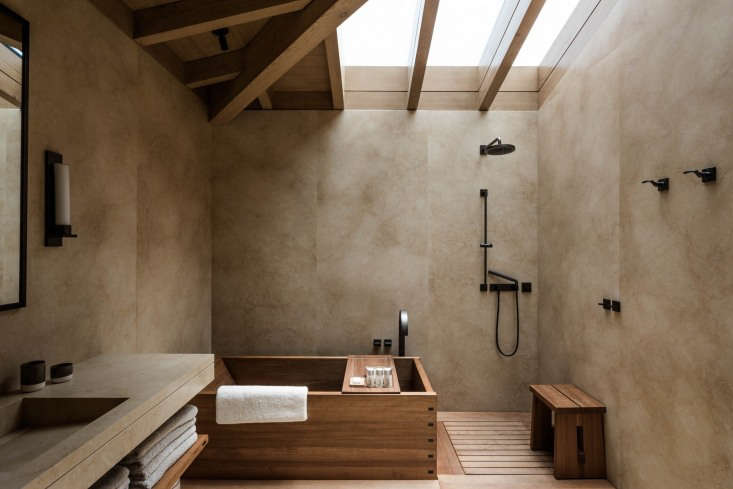
Image via Laure Joliet
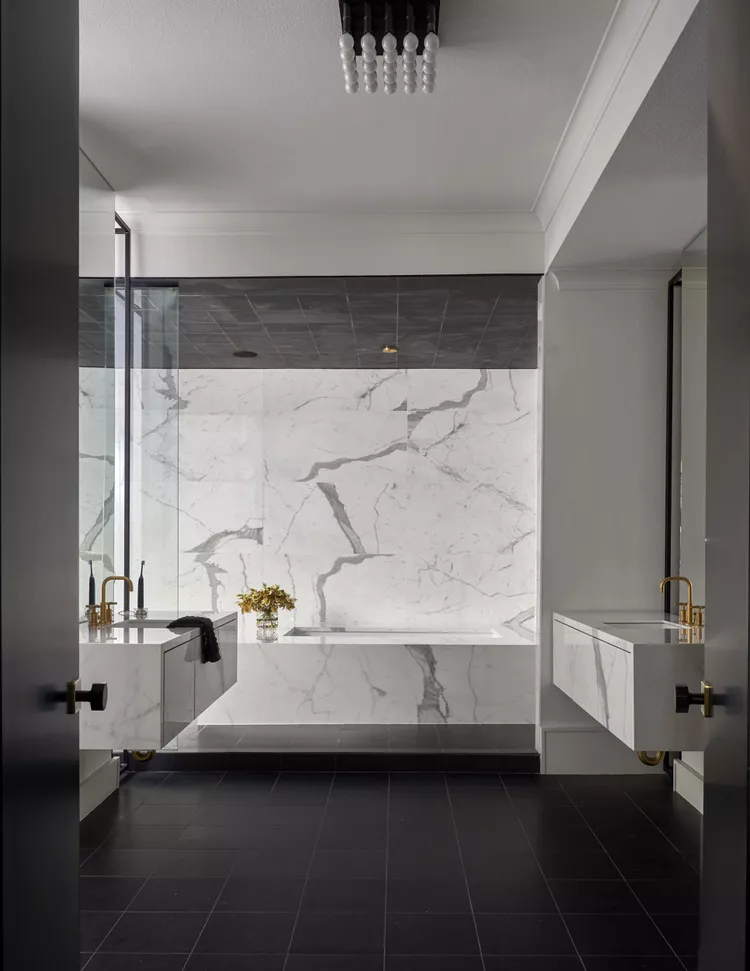
Image via My Domaine
Jet bathtubs make a relaxing and luxurious addition to any bathroom. Although this type of bathtub can be more expensive than others, it creates a spa-like experience in the comfort of your home.
The swirling water from the bath jets forms a hydrotherapy effect, making this bathtub suitable for bathers suffering from sore muscles and aching joints.
As jet bathtubs reproduce a spa experience, they’re wider and deeper than the average bathtub.
High-quality jet bathtubs also include self-cleaning features, making maintaining your bathtub much more convenient, and running water pumps also help to reduce bacteria and prevent mould.
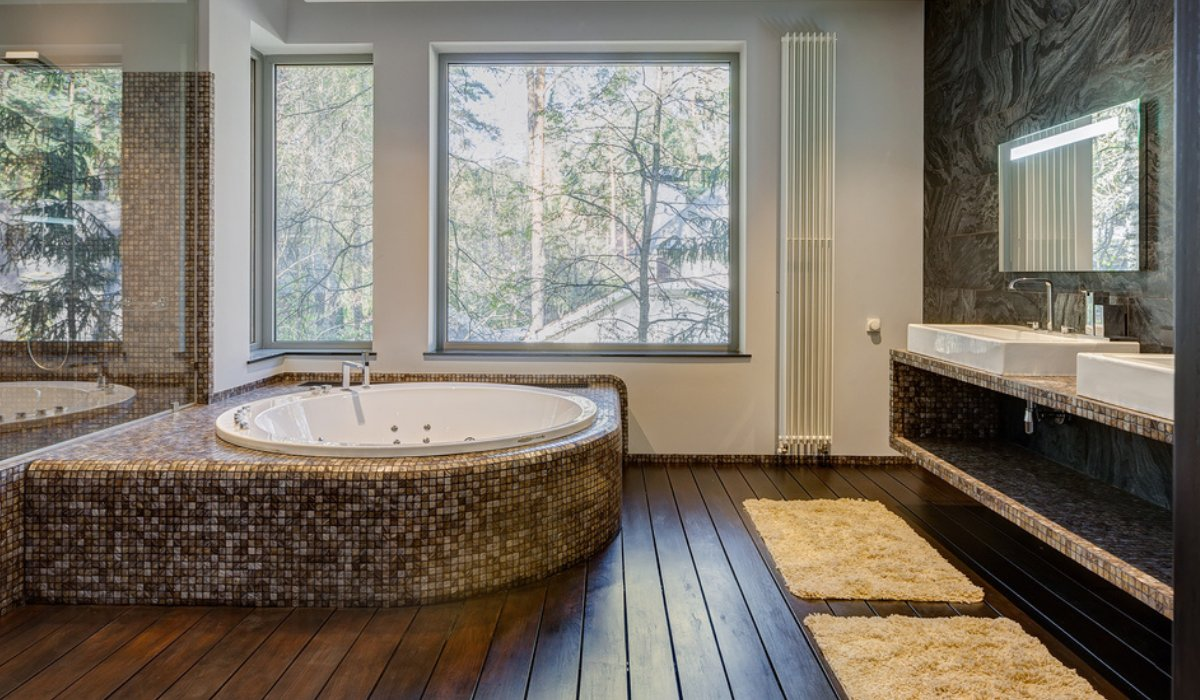
Image via Housing.com
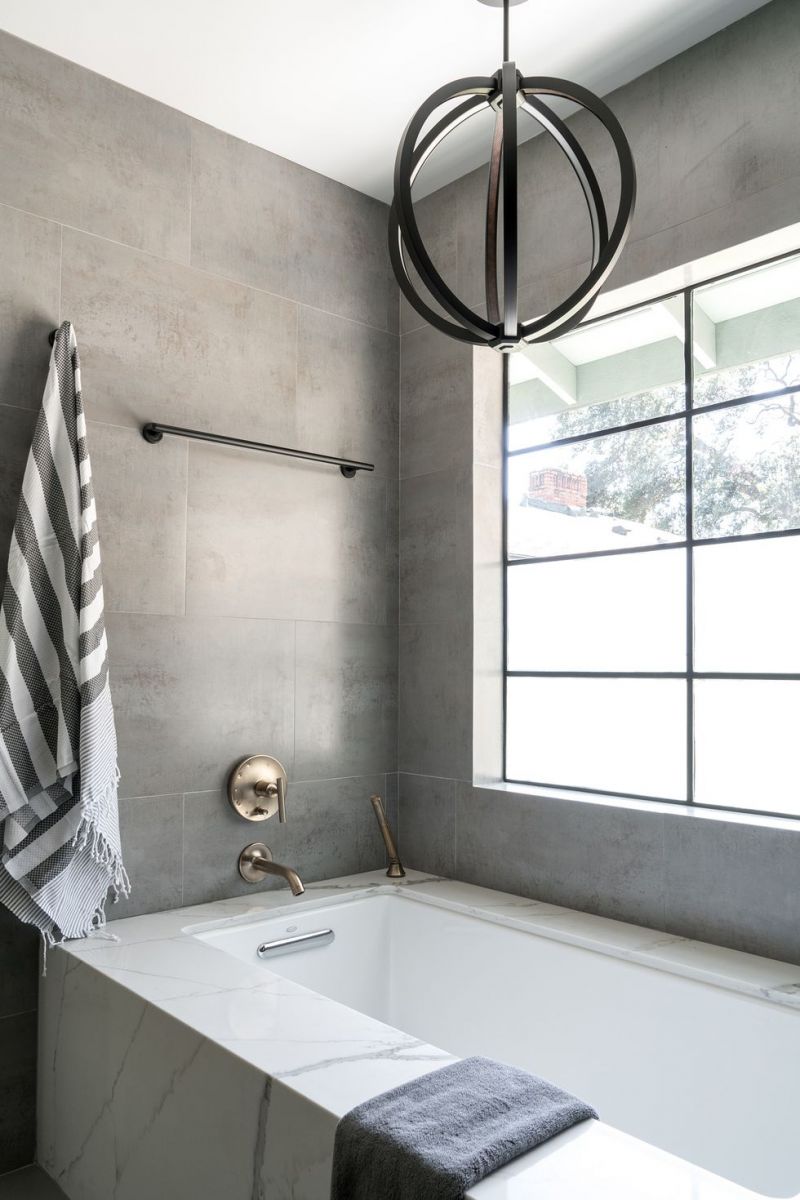
Image via Bethany Nauert
Material options for baths have grown over the past few years. In the past, your choices were limited (typically to enamelled steel, acrylic or common porcelain), but today Corian, stone, resin, and concrete baths are readily available. Allow us to help you understand the benefits of each so you can make the right choice for your bathroom.
This material is lightweight, smooth and comfortable - all desirable features for a bathtub. Acrylic retains heat well and remains warm to the touch - even when dry. These bathtubs are durable, particularly when reinforced with fibreglass, common in today’s acrylic bathtub designs.
This type of bathtub is also well resistant to cracks and chips, easily repairable, and typically a more affordable material compared to others, making it a popular choice among young families and those with pets.
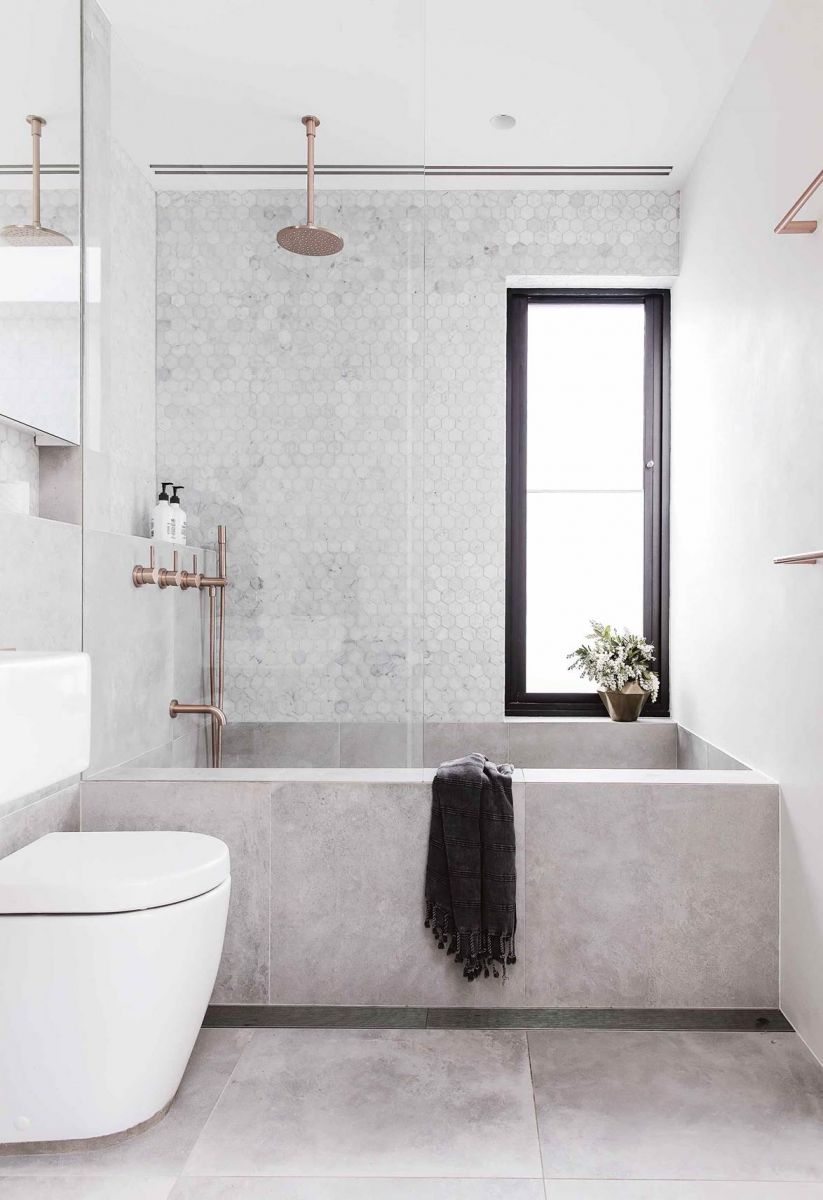
Image via Homes To Love

Image via Homes To Love
Solid surfaces are smooth, warm, durable and look beautiful. Solid surfaces are synthetic materials made from a blend of natural minerals and synthetic or plant-based resins.
It is a popular choice for bathtubs due to its smooth texture and excellent heat retention, allowing you to bathe for longer without adding more hot water.
There are many advantages to this bathtub material from a design perspective. Offering a seamless design, these bathtubs mimic the look and feel of a natural stone but are lighter in weight and are often eco-friendly.
This bathtub material is naturally resistant to stains, mildew and mould, making it easy to clean and low maintenance.

Image via Nathan Kirkman
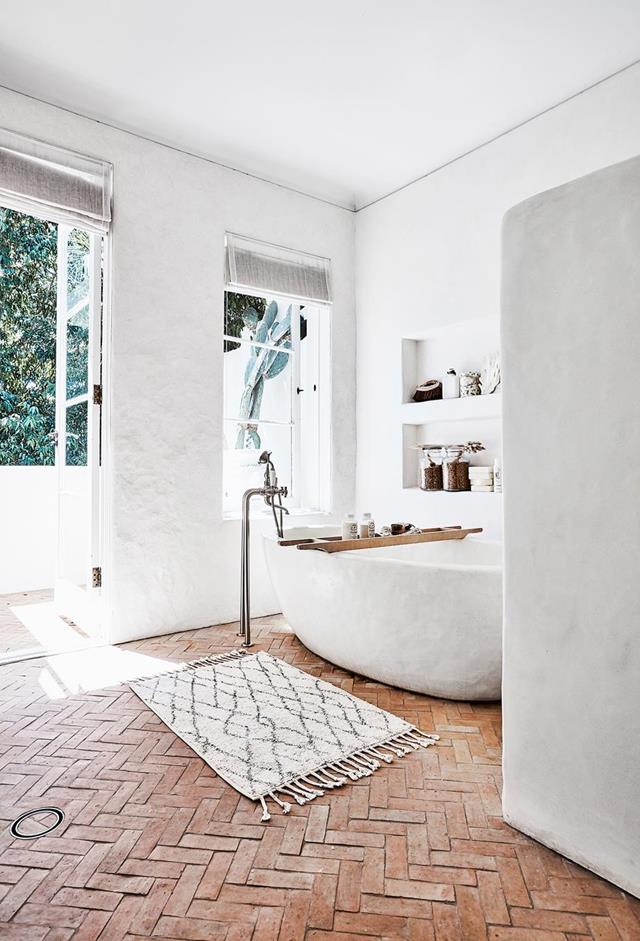
Image via Homes To Love
These bathtubs are built using a steel shell coated with an outer layer of porcelain enamel.
If your bathroom's aesthetic matters most, this bathtub material is an excellent choice. Offering a crisp, clean look, enamelled steel bathtubs have the benefit of retaining their lustre and colour for years as they are more resistant to chemicals and UV rays than any other bathtub material.
Functionally, this material retains its heat very well once it’s filled, but it will be cold to the touch when dry and is typically a more slippery surface than other bathtub materials.
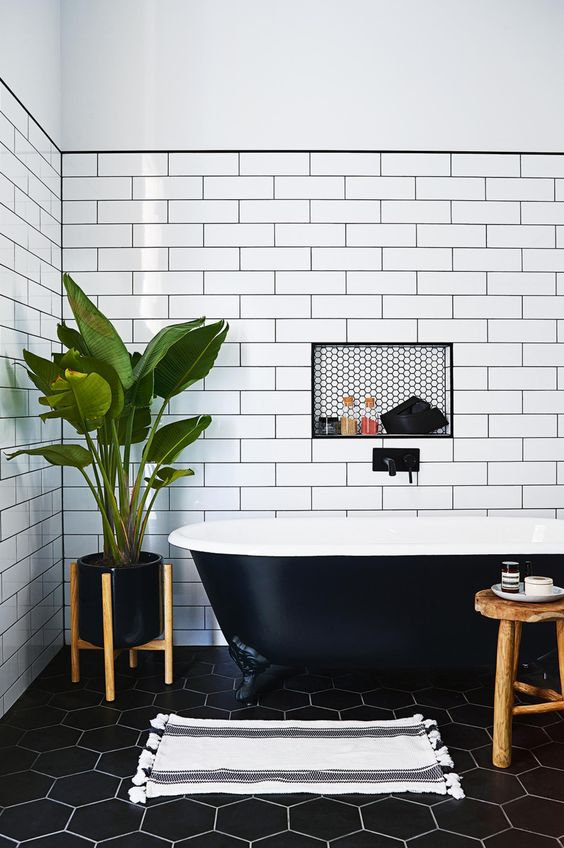
Image via Pinterest
Are you ready to create a beautiful and functional bathroom for your home? Leave it to the bathroom experts at Balnei & Colina renovations.
From design, manufacture to construction; our Sydney-based bathroom renovation experts would love to transform your home.
Book a bathroom design consultation today at 1300 450 320; send us your project details via this contact form, or book a call to discuss your bathroom project in more detail. You can also email us direct via info@balneiandcolina.com.au.
To keep up with the latest bathroom renovation trends, follow us on Facebook and Instagram or sign-up for our newsletter.
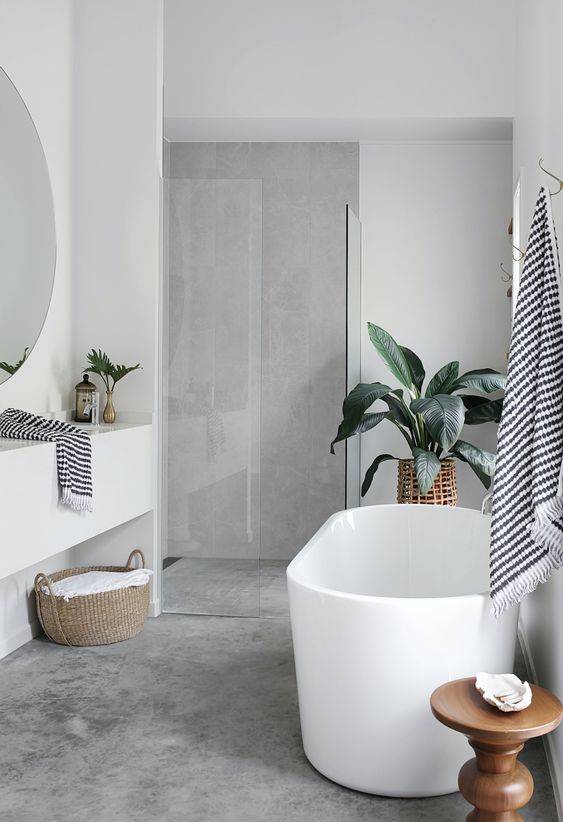
Image via Digs Digs

Image via The Block Shop

Image via Corben Architects
From an entire interior home renovation, to a new kitchen, we take care of everything. Call us today on 1300 450 320 or leave your details below to book your custom design consultation.